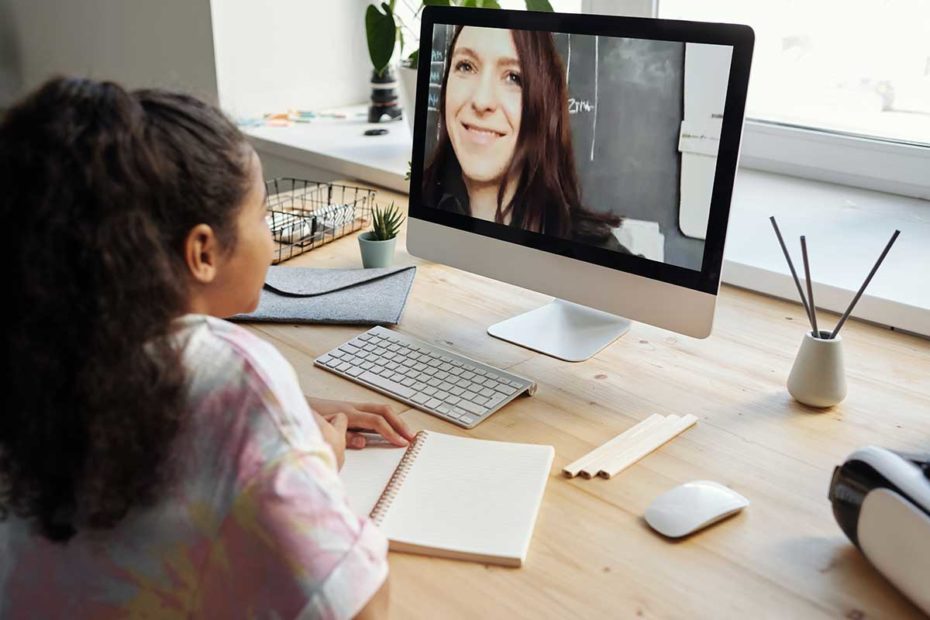The coronavirus put schools and teachers into an untenable position because they were forced to shut down classrooms and offer nearly a full semester of virtual school experience without adequate preparation, training, or resources. Now that we’ve had our first experience with an extended virtual school program, let’s take a step back and look at ways we can enhance the student experience in the virtual school setting.
In observing virtual schools in several states, Ed Directions has noticed some patterns that need to be a part of this “step back and rethink” process. Most virtual school plans provided for “one-size-fits-all” lessons; this is problematic. Even in a classroom where all students experience the same climate, culture, teacher support, and learning environment, this is an inadequate approach to “success for all.” In a virtual setting, it can exacerbate conditions that cause learning gaps and performing gaps between and among students. In a community where school is not recognized as an important factor in student life and students are not mandated to attend school, it may be a rash assumption to suppose that students are going to attend and be engaged in virtual school. Likewise, it may not be logical to expect parents who were never successful in school themselves to adequately support their child’s work in a virtual school setting. We could go on to analyze the importance of distraction-free work areas, the availability of environmental or real-world reading materials, etc. For the Ed Directions coaches, the important thing is that schools take time to decide what they want to accomplish with a virtual school, and then build plans that will enable the students to continue their development as learners and performers. If we continue to develop virtual schools that focus on covering content and providing students with practice activities, our coaches believe that the gaps will be significantly greater at the end of virtual school than they were at the beginning.
There are some strategies that Ed Directions is using in distance learning situations that might help in rethinking virtual learning – especially if we want to make sure that “at risk” students don’t fall farther behind their peers.
- THE HOOK – In our early years, Ed Directions had the opportunity to work with several schools that had a high percentage of students whose parents followed racehorses from track to track. Often, the students had little identification with their current school and tended to lag behind their age cohort group in terms of basic competencies in learning and performing. In talking with these students about school, we found that they really had little interest in what they were studying. Basically, school was not relevant to their world. Since the school’s Ed Directions coach had some experience with the racetrack, he purchased classroom sets of materials related to horseracing (both fiction and nonfiction), and he and another coach developed reading, writing, and mathematics activities that applied learning expectations to the racing industry. The activities included critical reading, critical presentations (some oral and some written), and critical thinking. They also included competitions (who’s going to win the fifth race, what distance does horse number five prefer, etc.)
One of the most successful “transition” activities grew out of our competitions. To get the students to identify with the school and the other students, we gave each of our target students a team of three students who were not connected to the racetrack. Every Friday, the teams evaluated the horses racing at one of the racetracks in the country that day and attempted to pick the winners of the first eight races. The students with the racetrack experience got to be the “experts” and teach the other students about furlongs, links, hands, track conditions, and jockey weights, etc. On Monday, we compared results and rewarded the teams who had picked the most winners. We debriefed the students and had each team identify what they had learned from the experience, what successes they had, and where they had misinterpreted data.
By the end of the second month, none of the migrant students were failing and they were identifying with the other students and with the school. Then the horses left for another racetrack and the students went with them.
In upgrading virtual learning experiences, Ed Directions suggests that school districts assess their students to identify common interests or common experience basis and use those as “hooks” to generate interest and enthusiasm for the work that will establish relevance and create meaning for the lessons that the students are going to do at home. One of the districts has identified student (and teacher) interest in outdoor activities; they are identifying hunting, fishing, camping, and hiking materials that they can use to increase student interest and engagement.
- IMMERSION – Sometimes a new idea or technology can become a hook for a large group of students and get them immersed in the learning process. Research indicates that immersion learning experiences help make students independent and lifelong learners. They encourage the students to seek out and learn things that are relevant to something that’s exciting for them. For me personally, it was rockets. I learned everything I could learn about rockets, I built rockets, I flew rockets, I shot rockets at targets (note: this is illegal if the target is a barge). For my son, it was dinosaurs and then computers.
Immersion learning is very appropriate as a distance learning experience during the summer but can become a cumulative or capstone activity for virtual school experience by providing a common theme that links all the learnings to some cumulative or capstone activity. This approach can generate interdisciplinary uses of learnings, provide real-world extensions, link students to mentors or recognized experts in collaborative learning or application experiences, and/or provide portfolio entries to monitor student growth through a virtual school experience.
Recently, Ed Directions’ coaches have worked with schools to develop immersion experiences around wildlife habitat restoration, getting a racehorse ready for its first race, robotics (yes, think battle bots), and developing strategic plans for the school during the next pandemic. We try to tailor the immersion to meet student interest, community expectations, and available resources. We also try to avoid potential conflicts. (Who knew that studying a local fossil bed could stir up a community-wide argument over evolution?) What we understand is that if we can get a student highly engaged in an immersion learning experience, we can change that student as a learner for the rest of his or her life and, in the process, raise their test scores and class grades.
There are number of other strategies we could try that could make distance learning or virtual learning experiences more meaningful for students. The important thing is that the districts and schools need to identify what they want the result of the virtual experience to be and then design experiences that will engage students in work that will produce the desired results.


